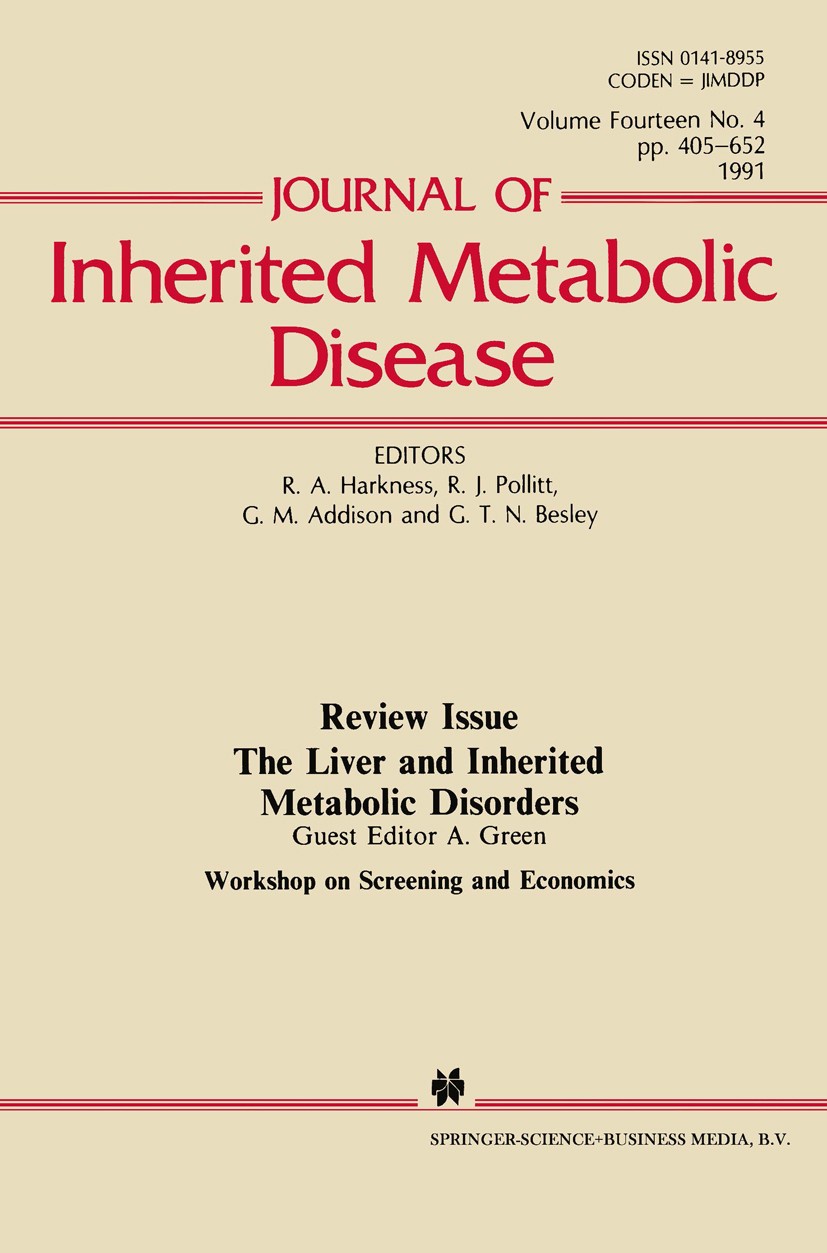| 书目名称 | Journal of Inherited Metabolic Disease | | 编辑 | R. A. Harkness,R. J. Pollitt,G. M. Addison | | 视频video | http://file.papertrans.cn/502/501234/501234.mp4 | | 图书封面 |  | | 描述 | The articles in Issue 4 of .Journal of Inherited MetabolicDisease., Vol. 14 (1991) contain the main lectures presented at the28th Annual Symposium of the Society for the Study of Inborn Errors ofMetabolism, Birmingham, UK, 1990, which was dedicated to `The Liverand Inherited Metabolic Disease‘ with a half-day workshop on`Screening and Economics‘. .The subjects covered include metabolic functions of the liver, bileacids, alpha-1-antitrypsin deficiency, tyrosinaemia type I,Crigler-Najjar disease type I and Niemann-Pick disease type C,providing updates on a wide range of metabolic disorders andillustrating the importance of the complementary contributions fromprofessionals in different disciplines. Also covered in detail is theexciting potential of liver transplantation as treatment for severalinborn errors of metabolism. .This state-of-the-art review will be of interest to clinicians andresearch workers alike. . | | 出版日期 | Book 1991 | | 关键词 | enzymes; liver; liver disease; liver transplantation; metabolism; transplantation | | 版次 | 1 | | doi | https://doi.org/10.1007/978-94-011-9749-6 | | isbn_softcover | 978-0-7923-8982-8 | | isbn_ebook | 978-94-011-9749-6 | | copyright | Springer Science+Business Media Dordrecht 1991 |
The information of publication is updating

|
|
 |Archiver|手机版|小黑屋|
派博传思国际
( 京公网安备110108008328)
GMT+8, 2025-11-12 04:50
|Archiver|手机版|小黑屋|
派博传思国际
( 京公网安备110108008328)
GMT+8, 2025-11-12 04:50


